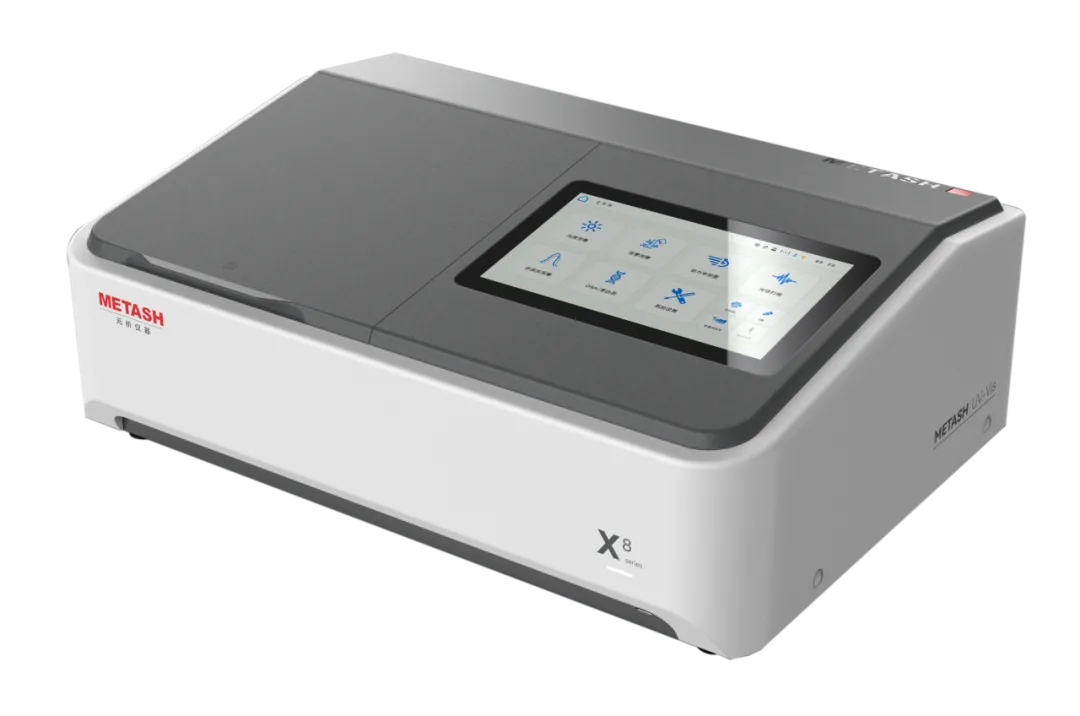- This topic is empty.
-
AuthorPosts
-
Introduction to the Issue of Phosphate in Water
Phosphates are essential nutrients for aquatic life, but excessive levels can lead to significant environmental problems. When the concentration of total phosphate (TP) in water exceeds 0.02 mg/L, it can trigger the overgrowth of algae, leading to a phenomenon known as eutrophication. This process depletes oxygen levels in the water, releases harmful toxins, and can cause the death of fish and other aquatic organisms. Moreover, high levels of phosphates in drinking water sources can pose health risks to humans, including liver damage and skin inflammation. Therefore, accurate and efficient detection of total phosphate in water is crucial for maintaining ecological balance and ensuring water safety. In this blog post, as double beam UV visible spectrophotometer manufacturer, METASH will share the the role of touch screen UV visible spectrophotometer in phosphate detection, its advantages, etc.
Role of Touch Screen UV Visible Spectrophotometer in Phosphate Detection
The double beam UV visible spectrophotometer has emerged as a powerful tool in the field of water quality analysis. This advanced instrument combines the precision of UV visible spectroscopy with the user-friendly interface of a touch screen, making it an ideal choice for both laboratory and on-site testing. The X-8 touch screen UV visible spectrophotometer, for instance, offers a high level of accuracy and reliability in detecting total phosphate in water samples. Its intuitive touch screen interface allows users to easily navigate through the testing process, from sample preparation to data analysis.

Experimental Methods Using Double Beam UV Visible Spectrophotometer
Preparation of Reagents and Standards
To accurately detect total phosphate in water using a touch screen UV visible spectrophotometer, several reagents and standards are required. These include:
– Sulfuric Acid (GR): Used for acidifying the sample and reagent solutions.
– Ammonium Molybdate (AR): Forms a complex with phosphate, which is essential for the detection process.
– Potassium Tartrate Antimony (AR): Acts as a catalyst in the reaction.
– Ascorbic Acid (AR): Reduces the molybdenum complex to form a blue-colored species that can be measured spectrophotometrically.
– Potassium Dihydrogen Phosphate (≥99.99%): Used to prepare the standard phosphate solution.
Calibration Curve Development
A critical step in the detection process is the development of a calibration curve. This involves preparing a series of standard phosphate solutions with known concentrations and measuring their absorbance at a specific wavelength (typically 880 nm) using the touch screen UV visible spectrophotometer. The absorbance values are then plotted against the corresponding phosphate concentrations to create a calibration curve. This curve serves as a reference for determining the phosphate concentration in unknown water samples.
Sample Analysis
Once the calibration curve is established, water samples can be analyzed. The samples are treated with the prepared reagents to form the phosphate-molybdenum complex, which is then reduced by ascorbic acid. The resulting blue-colored solution is measured for absorbance using the touch screen UV visible spectrophotometer. The absorbance value is compared to the calibration curve to determine the phosphate concentration in the sample.
Advantages of Using Touch Screen UV Visible Spectrophotometer
The double beam UV visible spectrophotometer offers several advantages over traditional methods of phosphate detection:
– High Precision and Accuracy: The instrument provides highly accurate measurements, ensuring reliable detection of phosphate concentrations.
– User-Friendly Interface: The touch screen interface simplifies the operation process, making it accessible to users with varying levels of technical expertise.
– Rapid Analysis: The instrument allows for quick sample analysis, enabling timely detection of phosphate levels in water.
– Data Management: The touch screen UV visible spectrophotometer often comes with built-in data storage and management capabilities, facilitating the recording and analysis of results.
Case Study
A recent study utilized the X-8 touch screen UV visible spectrophotometer to analyze the total phosphate concentration in various water samples. The results demonstrated the instrument's effectiveness in detecting phosphate levels with high accuracy and precision. The calibration curve exhibited a strong linear relationship (R2 > 0.999), and the recovery rate of the spiked samples was 97.71%, with a relative standard deviation of 0.31%. These findings highlight the potential of the touch screen UV visible spectrophotometer as a valuable tool in water quality monitoring programs.
Conclusion
The detection of total phosphate in water is a critical aspect of water quality management. The touch screen UV visible spectrophotometer offers a reliable, efficient, and user-friendly solution for this purpose. Its ability to provide accurate and rapid measurements makes it an indispensable tool for environmental scientists, water treatment facilities, and regulatory agencies. As technology continues to advance, further improvements in the sensitivity and versatility of double beam UV visible spectrophotometers can be expected, enhancing their role in the protection of water resources and the environment.
http://www.metashcorp.com
Metash -
AuthorPosts